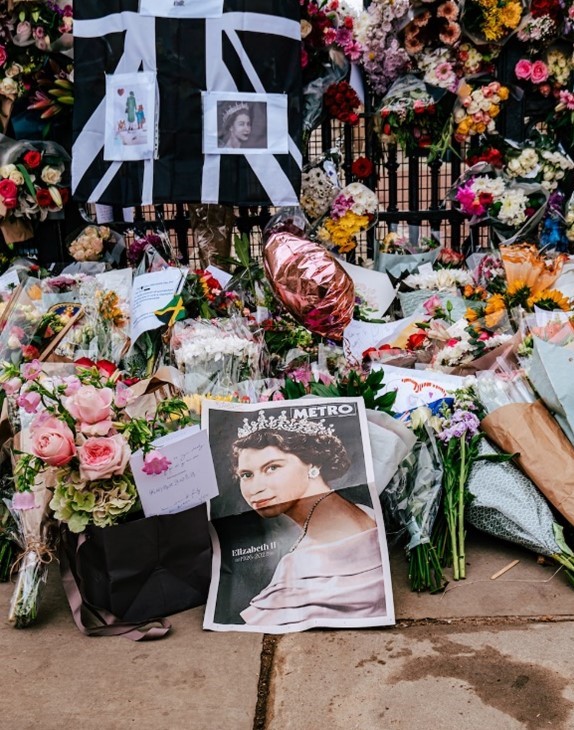Find out more about The Open University’s Health and Social Care courses.
This article is reproduced with kind permission of Marie Curie.
Shortly after Queen Elizabeth II died in early September, renowned palliative care consultant, Dr Kathryn Mannix outlined on Twitter how the Queen’s death might be an example of ‘ordinary dying’. Others both on social media and in the BMJ opinions section agreed: the Queen’s death could teach us something about how to die. We agree that the Queen’s death is a good case study for ordinary dying; but by drawing on the social sciences, we find the lessons are not quite as they may first seem.
What is ordinary dying?
Ordinary dying is a phrase or concept of dying that has been around in healthcare for decades. Dr Mannix has used the term ordinary dying to describe the modern dying process where symptoms are controlled well and people die peacefully. However, she observes that both those who are dying and those that care for them do not expect this ordinary death and therefore don’t recognise this as normal dying. By popularising this clinical phrase, Dr Mannix hopes to ‘normalise normal dying’ .
 When applying ordinary dying to the Queen’s death, Dr Mannix
made links to how the Queen slowly retreated from social life and did not
appear to have extraordinary medical intervention at the very end of life.
Elements of the Queen’s death were linked to the ideal of ‘good death’ –
planned, with family present, and in a location the Queen enjoyed being in.
When applying ordinary dying to the Queen’s death, Dr Mannix
made links to how the Queen slowly retreated from social life and did not
appear to have extraordinary medical intervention at the very end of life.
Elements of the Queen’s death were linked to the ideal of ‘good death’ –
planned, with family present, and in a location the Queen enjoyed being in.
Dying as a social event
It is often said in palliative care that dying is as much a social, as it is a medical, event. If so, then we might also want to also draw on the social sciences and medical humanities to raise some questions about what ‘ordinary dying’ might mean. For example, social scientists would ask: who decides what gets to become ‘normal’ or ‘ordinary’ and how does this then come to shape understandings of how someone should die or what gets called a good death?
So, we too were drawn to reflect upon whether the Queen’s death should be considered and promoted as ‘ordinary’ or as a role model for dying in the 21st Century. Viewed as a social phenomenon the Queen’s death was extra-ordinary: highly planned and anticipated (with rehearsals for announcements and funeral rituals practiced regularly for decades), at an age older than the average age at death, and with access to health professionals and levels of care that are not accessible to most of the UK population. Her longevity, health and death were greatly influenced by her unique class and social privilege.
How ‘ordinary’ dying could be problematic
Recognising this, we are now also in a better position to reflect on the implications of claiming that the Queen’s death is ‘ordinary,’ or that it could teach people how to die more like her, has for how we approach inequalities in society and palliative and end of life care. There is much to unpack in the relations between wealth, power, agency and social values in the claim that the Queen experienced ordinary dying, not least in the questions this raises as to whether non-ordinary deaths are of lesser or unequal value?
An important question social scientists also ask is ‘who is speaking?’ That is, what does it mean when a clinician says a person’s death is valued because it is ordinary? If specialist doctors define what is ordinary and non-ordinary dying, then it could be argued to be an attempt to reassert the primacy of dying as a medical event, one that – given the cultural importance of doctors in healthcare – has the power to supersede the agency of the dying person and those that care for them to describe the value of their dying and death.
We recognise that the everyday use of ‘ordinary’ or ‘normal’ dying can be useful to distinguish between the types of deaths witnessed by clinicians, but as social scientists it is part of our role to urge people to reflect upon how this usage might not be unproblematic. We also hope our reflections allow for further consideration about the difficulties of translating clinical terminology into social norms and values about how others should die.
_-_08.jpg)



Rate and Review
Rate this article
Review this article
Log into OpenLearn to leave reviews and join in the conversation.
Article reviews